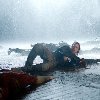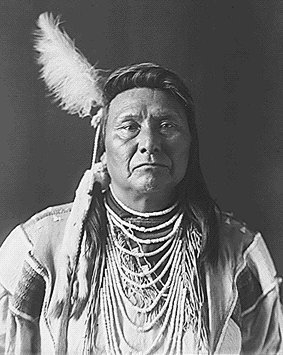Lance Morcan's Blog, page 96
August 23, 2013
Chicago hides a terrible secret that’s revealed in ‘The Orphan Factory’
This week’s review of our coming-of-age spy thriller The Orphan Factory (The Orphan Trilogy, #2) in Chicago web publication Gapers Block has thrown the spotlight on Chicago.
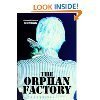
Chicago, the ‘City of the big shoulders’ as hometown poet-made-good Carl Sandburg once called it, is home to the twenty-three orphans who are raised in Chicago’s Pedemont Orphanage. It’s not just any orphanage. It’s home to genetically-engineered orphans who are raised to become the deadliest intelligence operatives the world has ever seen. Their purpose? To help the clandestine Omega Agency achieve its dream of establishing a New World Order.



If reader response is anything to go by, Chicago-ites seem to resonate with The Orphan Factory. Not surprising given their hometown figures so prominently in this novel.
The novel’s prologue sets the scene. Have a read and enjoy…
Prologue
An old vagrant hummed tunelessly to himself as he warmed his bony hands over a fire he’d lit minutes earlier in a drum long since blackened by perhaps a hundred such fires. Certainly more fires than he, or any of his street cronies, could remember. He stopped humming when, across a busy thoroughfare, a gravel-voiced busker began reciting poetry.
“Stormy, husky, brawling,” the busker rumbled. “City of the big shoulders.” He was reciting verse from the works of hometown poet-made-good, Carl Sandburg. The poem was appropriately titled Chicago. “Come and show me another city with lifted head singing so proud to be alive and coarse and strong and cunning.” The busker, a long-haired Vietnam veteran whose only concession to his military past was his VSM service medal which he still wore with pride, looked directly at the old vagrant opposite.
The vagrant imagined the busker smiled at him, though he couldn’t be sure in the fading early evening light. Even so, he flashed a toothless grin in the other’s direction.
Soon, the old man was joined by half a dozen street pals. All homeless like him, they appeared like disheveled ghosts out of the shadows, attracted partly by the warmth of the fire and partly by the busker. They listened intently to the poet’s words that flowed effortlessly from the busker’s mouth. Words that painted images so vivid in their minds it was as if the men were watching a kaleidoscope of their own youth.

“Under the smoke, dust all over his mouth, laughing with white teeth,” the busker continued. “Under the terrible burden of destiny laughing as a young man laughs.”
Several passersby paused to listen, but none bothered to drop a donation into the hat that lay at the busker’s feet. Finally, as the busker finished his recital, a business executive threw a quarter into the hat without breaking stride. Encouraged, the busker launched into another Sandberg poem.
Listening to the busker delivering further verses about his beloved Windy City, the old vagrant couldn’t help but note the irony: there wasn’t a breath of wind on this still Chicago evening.
The vagrant’s parents had always assured him the city’s misleading nickname had nothing to do with the weather. His mother had insisted the Windy City label came from the longwinded speeches given by the city’s Nineteenth Century politicians, while his father claimed the moniker had been mischievously bestowed by competitive New Yorkers in their attempt to win the World Trade Fair of 1893.
To add to the contradictions, even though it was February, it was an unusually mild winter’s evening. The vagrants gathered around the fire warming their hands did so more out of habit than necessity on this occasion.

Chicago’s streets were busy and the mood downtown was fairly upbeat. President Jimmy Carter was due to visit the city and greater Illinois the following day. Word had spread: the President would be here soon, and come hell or high water he was going to receive a right, royal Illinois welcome.
As Chicagoans went about their business, hurrying home after a long day at the office or heading out to sample the city’s nightlife, none were remotely aware of the sinister, Nazi-like experiment taking place virtually under their noses.
Despite the experiment’s seventy five million dollar price tag, only a select few knew about it. Those in the know did not include the city’s Mayor or any state politicians; at Federal level, not even the President knew about it.
The experiment was taking place in a laboratory in the concealed basement of a renovated warehouse just off North Michigan Avenue. Seven pregnant women were in various stages of labor in the lab that served as a makeshift maternity hospital.
Like some Orwellian nightmare, the women were giving birth in clockwork-like fashion, almost in unison.

Small teams comprised of doctors and white-coated geneticists assisted the women. A specialist induced latecomers. In the lab’s far corner, two suited men looked on expectantly.
The numerous personnel in attendance were all in the employ of the Omega Agency, a recently formed and highly secretive outfit which would one day become the world’s most powerful shadow organization.
Supervising the eerie experiment was Omega’s own Doctor Frankenstein – better known as Doctor Pedemont, the brilliant biomedical scientist responsible for the radical science behind it. Over the past few years, with the help of his team of geneticists, Doctor Pedemont had painstakingly selected the fetus’ genes from thousands of sperm donations combined with the genes of his female subjects. The donations had come from another medical experiment referred to as the Genius Sperm Bank.
The motivation behind the Genius Sperm Bank, which had been initiated over a decade earlier, was to advance the breeding of super-intelligent people. The bank was stocked full of semen donations solicited from many of the world’s most intelligent men.

Benefiting from the efforts of some of Omega’s elite operatives, Doctor Pedemont had unlawfully obtained hundreds of samples from the Genius Sperm Bank. Then, taking the best of the sperm donations, he’d artificially inseminated the very women who were now in the process of giving birth. This meant each child that was about to be born effectively had one mother and numerous fathers.
The legalities of the entire operation were of no concern to Omega. Although still in its formative stages, the agency was already above the law.
A tense Doctor Pedemont and three geneticists fussed over the first mother-to-be, a young redheaded woman, as she entered the final stages of labor. The two suits observing from afar waited anxiously as the geneticists used advanced scientific equipment to monitor the birth.
The redhead gave birth to female twins. They arrived six minutes apart. Doctor Pedemont picked up the first twin. After removing the umbilical cord, he placed the newborn baby on a set of scales. “Number Five,” he announced. “Born 7.43 pm. Weight seven pounds, thirteen ounces.”
One of the geneticists recorded the doctor’s findings in a file labeled Number Five. Sadly, this would be the closest the girl would ever have to a real name.
Doctor Pedemont gave the baby to another geneticist then grabbed her newborn sister and weighed her. “Number Six. Born 7.49 pm. Weight seven pounds, one ounce.”

The advent of twins was no accident, of course. Their arrival had been planned for, like everything else that occurred within the Omega Agency.
The next baby was born minutes later to an African-American woman. It was a boy who was clearly of African descent. However, he had a much lighter skin tone than his mother, indicating most or all of the sperm donations inseminated into the woman were taken from Caucasian men.
“Number Seven,” Doctor Pedemont announced. “Born 7.56 pm. Weighs exactly five pounds. A few weeks prem, but is perfectly healthy.”
Because Number Seven was a premature birth, one of the geneticists immediately placed him in an incubator. Number Eight, who was born quarter of an hour later, was a healthy girl of Oriental descent.
When Number Nine was born, the mother, a beautiful dark-haired woman with striking green eyes, reached out to Doctor Pedemont to indicate she wished to hold the boy she had just birthed. The doctor looked around enquiringly at the two mysterious suits who remained in the corner. After discussing it between themselves, the older of the two nodded.

Doctor Pedemont looked back at the newborn’s mother cautiously. “You know you’ll never see him again, Annette?”
Annette nodded forlornly. She fully understood the ramifications of her agreement with the Omega Agency. Doctor Pedemont reluctantly placed Number Nine in Annette’s arms. The baby boy reached out and placed his tiny hand on the ruby that hung from a silver necklace she wore.
“Sebastian,” Annette whispered tearfully as she looked into her son’s eyes. “I name you Sebastian, after my father.”
Anxious to avoid further bonding between mother and son, Doctor Pedemont took Number Nine from Annette and handed him to one of the geneticists who, without ceremony, jabbed a needle into the boy. Predictably, Nine started screaming. His mother looked on resignedly.
Later that night, two more boys and another girl were born. Like Number Nine, all three were Caucasian.
As Number Twelve, the last of the newborns, was weighed, the two suits approached a relieved Doctor Pedemont. They looked more relaxed now. The older of the two, a short, stocky, dapper individual with heavily pock-marked skin, reached for the doctor’s hand and shook it firmly. This was Andrew Naylor, the Omega Agency’s hard-nosed director who was known for his foul temper as well as for his lazy eye, which never quite managed to focus on whomever he was addressing at the time.

“Congratulations, doctor,” Naylor mumbled without even a hint of a smile.
“Thank you,” a beaming Doctor Pedemont responded, taking care to avoid eye contact with Naylor as he found the other’s lazy eye highly disconcerting.
Naylor’s companion, Special Agent Tommy Kentbridge, patted the doctor on the back in congratulatory fashion. “Well done,” Kentbridge said. Tall and ruggedly handsome – physically the polar opposite of Naylor – the special agent was one of Omega’s young stars. As a field operative, he had the sort of record most agents twice his age would be proud of. Although only in his early twenties, Kentbridge had been assigned to manage the products of this agency experiment. Like it or not, he would be the nearest to a father any of them would have.
It was a long-term experiment and no-one knew exactly what the outcome would be. The experiment was known in Omega circles as The Pedemont Project…
The Orphan Factory (The Orphan Trilogy, #2) is available via Amazon as a Kindle ebook: http://www.amazon.com/dp/B008M9WWKW/
For more info about The Orphan Trilogy (The Ninth Orphan / The Orphan Factory / The Orphan Uprising), go to: http://www.youtube.com/user/SterlingGateBooks
Happy reading! –Lance
*********************************************


August 22, 2013
The timing for our 3D thriller SILENT FEAR couldn’t be better if James Cameron is right
TITANIC director James Cameron waxed lyrical about the future of 3D in a recent BBC interview, stating it’s “ absolutely inevitable that entertainment will all be 3D eventually”.
Cameron sees bright future for 3D
If he’s right, this bodes well for our British thriller SILENT FEAR, which is to be shot on location in London next year. It’s likely to be released in the three-dimensional format.
However, depending on who you talk to, it seems the jury’s still out on the future of 3D in movies.
In an interesting report in Indiewire.com’s The Playlist this week, columnist Kevin Jagernauth says the 3D format has been taking some blows at the box office, with North American crowds favoring regular old 2D for the majority of their viewing experience.
Here’s some excerpts (abridged) from that report:
To 3D or not to 3D, that is the question, and lately…the format has been taking some blows at the box office, with North American crowds favoring regular old 2D for the majority of their viewing experience. This summer, only 25% of total domestic ticket sales of Dreamworks’ animated film “Turbo” came from those uncomfortable glasses, with 31% of sales for “Monsters University” in 3D, and only 34% for Brad Pitt’s biggest grossing movie ever, “World War Z.”
World War Z’s 3D sales down
But don’t tell that to James Cameron, who sees only a bright, three-dimensional future for the format…
Chatting recently with the BBC, the director made it clear that 3D is here to stay. “For me it’s absolutely inevitable that entertainment will be 3D, it’ll all be 3D eventually, because that’s how we see the world,” he said, adding: “When it’s correct and convenient for us, we pre-select for that as the premium experience.”
Avatar an Oscar star
From an industry perspective, he (Cameron) points to the fact that three out of the last four Cinematography Oscars went to 3D movies (“Avatar,” “Hugo” and “Life Of Pi”). And though he acknowledges that “bad conversion” has “polluted” the experience for man—not to mention a handful of cable networks dropping channels broadcasting in 3D recently—Cameron ultimately believes the technology, product and consumer desire for 3D will all dovetail eventually into a perfectly synchronized harmony of success.
And while Cameron’s comments might seem wildly out of touch with what audiences are clearly voting for at the box office, it should be noted that overseas 3D is still huge, with 80-90% of tickets moviegoers in Russia and China choosing to put on the glasses. And as long as that’s the case, 3D isn’t going anywhere…
…There is probably no bigger cheerleader on the planet for 3D than James Cameron, but he’s also been the loudest voice when it comes to half-hearted, unartistic use of the format…
…”I do not think Hollywood is using the 3D properly…because it is automatic. For example, ‘The Man of Steel,’ ‘Iron Man’ and all those movies should not necessarily be in 3D. If you spend 150 million on visual effects, the film is already going to be spectacular, perfect.” You would think that the same logic would apply to Cameron’s already expensive “Avatar,” but it was shot in 3D, whereas the superhero flicks were conversion jobs, and that’s where the difference lies.
“One thing is shooting in 3D and another to convert to 3D. After ‘Avatar’ changed everything, good and bad movies, everything has to be in 3D since ‘Avatar.’ The problem I see now is that instead of it being a filmmaker issue is a matter of the studios to make money and are pushing 3D to directors who are not comfortable or do not like 3D,” Cameron elaborated.
For the full article go to: http://blogs.indiewire.com/theplaylist/director/james-cameron
Footnote: SILENT FEAR’s New Zealand producers Brent Macpherson, of Stretch Productions, and Ronel Schodt, of Shotz Productions, welcome expressions of interest from A-List directors as well as from experienced British producers interested in collaborating on this highly commercial feature film project.
http://pro.imdb.com/title/tt1935228/
http://stretchproductions.co.nz/
*************************************************
Back to school for 23 genetically-altered orphans in ‘The Orphan Factory’
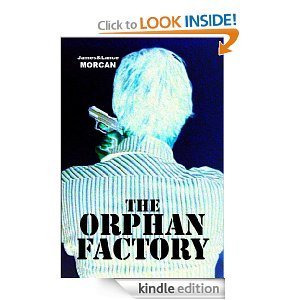
In this week’s edition of Chicago web publication Gapers Block, Book Club reviewer Kathryn Pulkrabek says:
Reading, writing, and espionage? It’s back to school for 23 genetically-altered orphans being trained as cold-hearted assassins as part of the shadowy Omega Agency’s Pedemont project in The Orphan Factory by James Morcan and Lance Morcan.
Beginning in a Chicago warehouse in the 1970s, this prequel to the Morcans’ The Ninth Orphan recounts the origins of Number Nine, the spy who will eventually rebel against Omega and live life on the run. The inclusion of actual events (such as the Jonestown massacre and Bill Clinton’s presidential election) lends authenticity to the story, while the ease in which they are manipulated by Omega shows that seeing is not necessarily believing– an eerily relevant lesson in our media-saturated world.
The Orphan Factory (The Orphan Trilogy, #2) is available via Amazon as a Kindle ebook at: http://www.amazon.com/dp/B008M9WWKW/
It’s one of several young adult novels reviewed in Gapers Block’s Book Club this week. To view them all go to: http://gapersblock.com/bookclub/2013/08/20/in_the_the_book_of/
Happy reading! -Lance
**************************************************


August 21, 2013
Remy Benoit writing on all things
If you are seeking stimulation in the literary, arts and humanitarian fields, or just in life generally, allow me to introduce you to ‘Remy Benoit writing on all things’ – a new blog site guaranteed to stimulate.
Miz’ Remy, as she likes to be called, is an historian, author and long time veteran advocate from the USA’s deep south.
Here’s a smattering (excerpts only) of topics covered on Mis’ Remy’s blog. To view them in their entirety go to: http://remybenoit.wordpress.com/
remybenoit
writing on all things
Attention: Children and grandchildren of Viet Nam Veterans
Please look into this, file this form, post comments and make the powers to be understand the legacy you have been left with. Responsible action must be taken.
Visit with Agent Orange Legacy, now, please!
http://agentorangelegacy.blogspot.com/2013/05/important-message-to-children-of.html
This time stand with the Nez Perce
When I used to teach about the fight between the cavalry and the Nez Perce, the young people would be outraged at such senseless destruction over a 1500 mile range of pursuit and fighting. Chief Joseph made a speech that went to the heart of the matter amidst the cold snow, ice, and slaughter:
Tell General Howard I know his heart. What he told me before, I have it in my heart. I am tired of fighting. Our Chiefs are killed; Looking Glass is dead, Ta Hool Hool Shute is dead. The old men are all dead. It is the young men who say yes or no. He who led on the young men is dead. It is cold, and we have no blankets; the little children are freezing to death. My people, some of them, have run away to the hills, and have no blankets, no food. No one knows where they are – perhaps freezing to death. I want to have time to look for my children, and see how many of them I can find. Maybe I shall find them among the dead. Hear me, my Chiefs! I am tired; my heart is sick and sad. From where the sun now stands I will fight no more forever.
Chief Joseph
An Interview with Robert Foley: The Consequences of Playing God
Mr. Foley has written a seminal work on the state of education in our country. It is a book everyone who cares about our children and their education should read. As I turned page after page of his exquisite writing, my mind kept going back to two decades as a teacher and remembering people and situations so close to the tale he is telling and you should be reading. You will find his book and my review here. Do put it on your must read list! Consequences of Playing God.
Now, to the interview with his publisher at XLibris.
Robert Joseph Foley is a retired teacher. He spent 34 years teaching in an urban school district and for most of those years was an active representative of the Yonkers Federation of Teachers. He has previously published a poetry collection – “These Little Poems of Death and after Life” – and is currently working on securing production for two as yet unpublished plays. He currently works as a free lance writer and proofreader for several independent publications.
Do you have any particular literary influences that help you develop writing in your genre, subject, and style?
I cannot pinpoint any particular writer who has influenced me; actually, I have developed what I think is a unique style that is probably the sum of all my reading experiences. Favorite writers range from Joyce Carol Oates back to Dostoevsky and Charles Dickens.
Who is Miz’ Remy?
Hello,
Like all of you, I am many things.
A mother.
A writer, editor, publisher. http://www.niquahanam.com/writing
Editor for the West Point Class of 1968. Two volumes: Both Sides of the Wall Reflections of the West Point Class of 1968
An historian.
A long time veteran advocate. http://www.welcomehomesolider.com
A book reviewer.
A gardener.
An activist who treasures life on this planet for which we are caretakers.
Do yourself a favour and visit ‘Remy Benoit writing on all things’ blog at http://remybenoit.wordpress.com/ -Lance
**********************************************
English peculiarly capitalistic? 1.5 million English language books can’t be wrong.
English has become a peculiarly capitalist language, according to The Guardian columnist Owen Hatherley, author of Militant Modernism.
In a recent article in The Guardian, Hatherley says researchers at the University of California Los Angeles proved there has been an ever-increasing use of particularly acquisitive words in the English language.

Owen Hatherley
Here’s some excerpts from Hatherley’s article:
They (the researchers) used the somewhat blunt instrument of feeding 1.5m English-language books into Ngram Viewer, a tool that catalogues phrase usage, in order to count the frequency that words were used. The results proved that over the last 200 years there has been an ever-increasing use of particularly acquisitive words: “get”, “unique”, “individual”, “self”, “choose”; while over the same period “give” and “obliged” decreased.
The pattern was only broken briefly in the relatively egalitarian years between the 40s and 70s. For the researchers, this shows the results of the English-speaking countries moving from “a predominantly rural, low-tech society to a predominantly urban, hi-tech society…
…What has happened over those 200 years was the rise to dominance of capitalism, which obviously changed, and changes, our language and thinking. The researchers discovered a more algorithmic and superficial version of something that the Welsh socialist writer Raymond Williams had already tried to uncover – the way that English had become a class language, where loaded words (and, as he often pointed out, pronunciations) were accepted as “standard”.

In Culture and Society (1958) Williams forced the reader to think about certain keywords whose meaning was usually assumed: “class”, “democracy”, “art” and “industry” were old terms which had acquired almost entirely new meanings. Over the same 200 years studied by the LA researchers, “artist”, for instance, had gone from meaning “a skilled person” to signifying “a special kind of person”, working in the “imaginative” or “creative” arts.
In The Long Revolution (1961), Williams left literature behind to find the roots of class discourse in the English language itself, where French and Anglo-Saxon words were always weighted differently: “we can trace the minor relics of class prejudice in the lasting equation of moral qualities with class names: base, villain, boor and churl for the poor” – mostly terms suggesting “low” birth – while “gentle”, “proud” and “rich” were aristocratic terms of French origin (from gentil, prud and riche)…
…Even a word as central to the current debate as “austerity” comes with its own bias: originally from the Old French austerite meaning “harshness or cruelty”, it carries in Britain also a positive meaning, being associated with the self-restraint at the expense of the public good which was required by the wartime economy, when nowadays it is used to justify policies that effect the exact opposite. But to reveal the pernicious assumptions behind these professedly innocuous words will take more than a sophisticated search engine.
For the full article go to: http://www.theguardian.com/commentisfree/2013/aug/11/capitalism-language-raymond-williams
**********************************************


August 19, 2013
Teaser trailer for 3D feature film SILENT FEAR – shooting in London in 2014
Here’s our teaser trailer for SILENT FEAR: http://youtu.be/Ll9O9dedd44
When you can’t hear……death comes silently.
Scotland Yard detective Valerie Crowther is assigned to investigate the murder of a student at London’s Wandsworth University for the Deaf. Her investigation coincides with a student contracting a deadly flu virus, which results in the university being sealed off from the outside world. When more deaf students are murdered, it’s clearly the work of a serial killer. The stakes rise when Valerie becomes the killer’s next target and the deadly virus claims more lives.
The video teaser above is a re-enactment of the first brutal murder.
Inspired by the murders of two deaf students at America’s Gallaudet University for the Deaf in the early 2000’s, SILENT FEAR is a chilling, claustrophobic thriller set in London. The screenplay is by Lance & James Morcan, of Morcan Motion Pictures.
New Zealand producers Brent Macpherson, of Stretch Productions, and Ronel Schodt, of Shotz Productions, are aiming to shoot SILENT FEAR on location in London as a likely 3D production in 2014.
The producers welcome expressions of interest from experienced British producers interested in collaborating on this highly commercial feature film project as well as A-List directors.
http://pro.imdb.com/title/tt1935228/
http://stretchproductions.co.nz/
*************************************************


August 17, 2013
Okay, so now Area 51 officially exists, but what about all those UFO sightings?
After decades of accusations that the conspiracy theorists are nutters, the US Government has finally admitted the famed Area 51, in Nevada, does exist.
A satellite image of Area 51
The top secret cold war test site adjoining Nellis Air Force Base, northwest of Las Vegas, has long been fodder for speculation the authorities have covered up reported sightings of UFO’s and aliens. Until now the government has denied its existence.
Nellis Air Force Base
Now a newly declassified CIA document confirms the existence of Area 51. The document states the contentious zone was used as a testing range for the government’s U-2 spy plane during the Cold War.
However, there’s no mention of the controversial Roswell incident, which UFO believers claim was an alien space ship that crashed in New Mexico in 1947 and not a weather balloon as the authorities insisted. Supporters of the theory allege that Area 51′s hangars were used to hide evidence of alien bodies recovered from the ship.
The CIA asserts government secrecy surrounding Area 51 was simply about ensuring a new spy plane – the U-2 reconnaissance aircraft – remained hidden from prying Soviet eyes. Plausible considering it was designed specifically for high altitude snooping on the Soviets.
The report explains the “tremendous increase in reports of unidentified flying objects” as an “unexpected side effect” of high altitude testing of the U-2. Also plausible considering the U-2′s silver wings reflected the rays of the sun.
However, that doesn’t explain the Roswell incident or the many other reported UFO, and indeed alien, sightings in and around Area 51 over the years.
It’s easy to dismiss the reports as the ramblings of zealous conspiracy theorists. However, in the wake of the US Government’s belated and official admission that Area 51 does exist, maybe those reports shouldn’t be dismissed quite so readily.
We visit Area 51 and Nellis Air Force Base in The Orphan Uprising, book three in our conspiracy thriller series, The Orphan Trilogy. Be warned, it raises more questions than answers – questions we’ll probably never know the answers to.
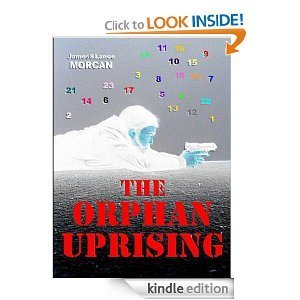
The Orphan Uprising (The Orphan Trilogy, #3) is available via Amazon: http://www.amazon.com/dp/B00BFC66DM/
**************************************


August 16, 2013
‘The Orphan Trilogy’ books rate highly with Amazon reviewers
The latest reviews are in for our conspiracy thriller novels – all 5 Stars! Excerpts from these reviews, together with the novels’ average Amazon reviewer rating, follow below…
The Ninth Orphan – Average reviewer rating 4 Stars
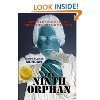
“This book was absolutely one of the best books I have read in my time, it’s extremely engaging and exciting. During the time I was reading the trilogy I struggled to put them down for five minutes!!!” -Book Addict
For full review go to: http://www.amazon.com/dp/B0056I4FKC
The Orphan Factory – Average reviewer rating 4.7 Stars

“…..The second book gives Nine a history, what created the man you meet in the first book… A very well written, multi-faceted book that is a joy to read.” -S.J. Hailey
For full review go to: http://www.amazon.com/dp/B008M9WWKW/
The Orphan Uprising – Average reviewer rating 5 Stars
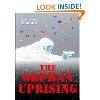
“I can’t say enough about this international conspiracy thriller series. Fast paced action and an extremely thought provoking premise.” -Phoenix
For full review go to: http://www.amazon.com/dp/B00BFC66DM/
If you’re a conspiracy thriller fan, you may be interested to know The Orphan Trilogy is available as a discounted box set – average Amazon reviewer rating 4.4 Stars.
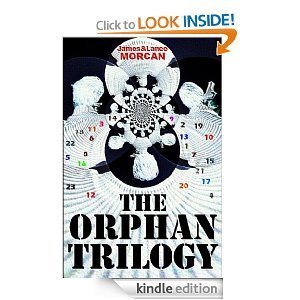
The Orphan Trilogy (The Ninth Orphan / The Orphan Factory / The Orphan Uprising) available via Amazon at http://www.amazon.com/dp/B00BGGM05U/
*************************************


August 14, 2013
Looks like New Zealand is part of US spy network – like it or not
In the wake of whistleblower Edward Snowden’s revelations it seems there’s little doubt that New Zealand is part of the US spy network.
Ah well, I guess it had to happen. Down here in God’s Own (New Zealand, or Newzil as we Kiwis call it), buried as we are at the bottom of the world, it’s easy to be lulled into a false sense of security – to believe our isolation protects us from terrorism, Big Brother and snooping spy agencies.
While our Government Communications Security Bureau (GCSB) refuses to say whether it transmits information from American spy satellites to the US, information leaked by former US National Security Agency contractor Ed (Snowden) suggests our listening stations are indeed used to collect data from American spy satellites overhead.
It was NZ Herald reporter Isaac Davison’s article of August 6 that first got my interest over this whole sorry business. He reported security experts fear GCSB’s Waihopai base (here in NZ) is used to process data from an American mass surveillance program – a program “which is capable of secretly accessing emails, online chats and internet browsing histories from around the world”.
The article quotes computer forensic investigator Daniel Ayers, who founded IT security firm Special Tactics, as saying the leaked documents showed the global scale of the US spy program.
Here’s more from the article:
…New Zealand’s spy bases were already used to collect intelligence from the South Pacific and relay it to Five Eyes intelligence alliance partners – the US, Canada, the UK and Australia. Mr Ayers said the leaked document hinted that New Zealand could be a conduit for data intercepted by US spy satellites.
“Does that red dot on the map signify that Waihopai is being used to ‘downlink’ intercepted data from other countries? If that’s the case, then it’s pretty big news because I don’t think that’s been publicly discussed by the Government. It means our role in this is greater than we knew.”
He said it also raised the possibility that US agencies were intercepting New Zealanders’ communications.
Former GCSB senior adviser Damien Rogers said the revelation that an XKeyscore server was located in New Zealand was not in itself significant. But it prompted questions about where data from the mass surveillance programme went and who had control over it…
For the full article go to: http://www.nzherald.co.nz/privacy/news/article.cfm?c_id=546&objectid=10908642
We raise many of the concerns highlighted by Edward Snowden, and Julian Assange before him, in our conspiracy thriller series The Orphan Trilogy (The Ninth Orphan / The Orphan Factory / The Orphan Uprising). Yesterday’s blog at http://morcanbooksandfilms.com/ highlights some of these.
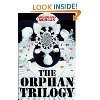
We set the tone in The Ninth Orphan, book one in the series. Here’s an excerpt from The Ninth Orphan (The Orphan Trilogy, #1):
“…The emerald green eyes that stared back were full of strength and determination. They were also tinged with sadness – for a life their owner had never experienced.
Studying his reflection in the safety of his hotel room, Nine noticed the mirror had flecks of mold on it as well as fingerprints from other guests.
Lamenting his foiled transaction with the Chinese in Kensington Gardens earlier that morning, he still didn’t know which agency had interfered. It had been a serious setback for his plans. He knew there’d be another opportunity to trade with the Chinese, however.
After he’d given the police the slip at Saint Yeghiche Church, he’d gone to the East End. Then, once satisfied he’d shaken his pursuers, he had checked into this inconspicuous hotel and immediately set about establishing a new identity for himself.
Nine knew, without a shadow of a doubt, the Omega Agency would already know he was in London. He was only too aware Omega had people planted on the inside of all Western intelligence agencies. It was a no-brainer his fellow Omega operatives would be coming for him.
The contents on his flash drive were far too valuable for the agency to give up on.
The fugitive agent reminded himself it was imperative he presented a different face to the world each time he ventured out.
He made a silent vow to make good use of his vast array of disguises. Be like a ghost and they’ll never catch you.“
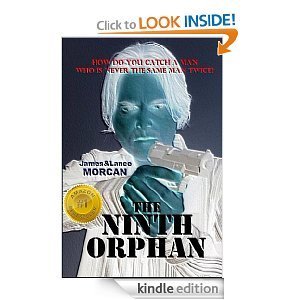
The Ninth Orphan is available as a trade paperback and kindle ebook via Amazon at: http://www.amazon.com/dp/B0056I4FKC
P.S. I liked one wag’s comment on TV last night. He said our GCSB is a misnomer and should be renamed GCBS…and we all know what BS stands for!
Happy reading! – Lance
******************************************


August 13, 2013
Pardon whistleblower Ed Snowden? Someone thinks so…and he may have a point!
In today’s issue of Truthdig.com, columnist Robert Scheer asks “How do you justify criminally charging a government contractor for revealing an alarming truth that the public has every right to know?”
Scheer claims, “That is the contradiction raised by President Obama now that he has, in effect, acknowledged that Edward Snowden was an indispensable whistle-blower who significantly raised public awareness about a government threat to our freedom.”

Scheer says it’s unfortunate the president didn’t have the grace and courage to concede that precise point and remains committed to imprisoning Snowden instead of thanking him for serving the public interest. He reckons WikiLeaks founder Julian Assange nailed it when he (Assange) said, “Today, the president of the United States validated Edward Snowden’s role as a whistleblower by announcing plans to reform America’s global surveillance program”.


Edward Snowden Julian Assange
Here’s some of the more telling excerpts from Sheer’s Truthdig.com article:
While boasting, “I called for a review of our surveillance programs,” Obama avoided the obvious fact that this review was compelled not by a sudden burst of respect for the safeguards demanded by our Constitution but rather Snowden’s action in making the public cognizant of the astounding breadth and depth of the National Security Agency’s spying program.
Once again, Obama managed to blame not those responsible for government malfeasance, himself included, but instead the rare insiders driven to do their duty to inform the American people. “Unfortunately, rather than an orderly and lawful process to debate these issues and come up with appropriate reforms, repeated leaks of classified information have initiated the debate in a very passionate but not always fully informed way,” he said.
How disingenuous, to put it mildly. Without the leaks, there would be no reforms. We, the voters, couldn’t initiate a debate about the wisdom of this extensive spying because the government officials who authorized it, from the president on down, kept us in the dark.
For Scheer’s full article go to: http://www.truthdig.com/report/item/restore_honor_and_pardon_edward_snowden_20130813/
Regardless of the rights and wrongs of Snowden’s actions, or Assange’s for that matter, Scheer does have a point when he asks how Snowden can be condemned for revealing information “the public has every right to know”. But, hey, maybe I’m missing something here?
We’d like to know what you think. Drop a line or leave a message on our blog.
It is a tricky one this ‘freedom of speech vs national security issue’ and I know there’s no simple answer. We raise some of these very issues in our conspiracy thriller series The Orphan Trilogy (The Ninth Orphan / The Orphan Factory / The Orphan Uprising).



Here’s some relevant quotes from The Orphan Trilogy:
* “Factual reporting is all too often propaganda designed to provoke certain reactions from the masses.”
* “Each administration sold out on the most lucrative issues – oil, banking, drug trafficking, arms sales.”
* “The Omega Agency had infiltrated the highest ranks of the CIA.”
* “The only salvation for civilization lies in the creation of a world government.”
* “Kentbridge was certain all of the US presidents since JFK had been puppets.”
* “One could place a monkey in the White House Oval Office and everything would run just fine.”
* “Why else do you think we are permanently at war in various regions all over the world?”
* “Why is it the citizens of this country, one of the richest on earth, get poorer each year?”

The Orphan Trilogy box set is available via Amazon at: http://www.amazon.com/dp/B00BGGM05U/
Happy reading! –Lance
***************************************




